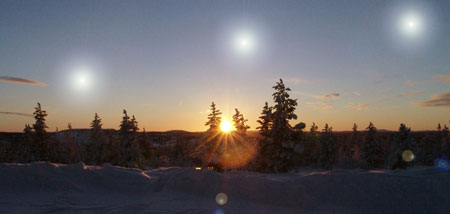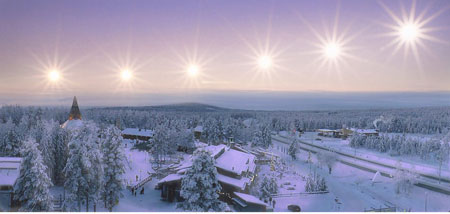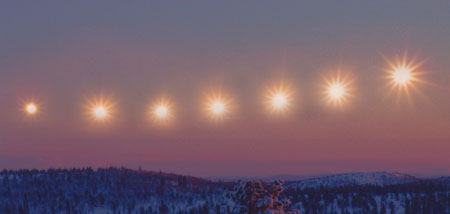2007 young european artist trieste contemporanea award
my sunshine a project by nikola uzunovski (macedonia)
trieste, studio tommaseo
curator: Massimo Premuda
organizers: Trieste Contemporanea-Dialoghi con l’Arte dell’Europa centro orientale 2007, L’Officina-Progetto Brainwork, Studio Tommaseo-Istituto per la documentazione e la diffusione delle arti
venue: Trieste, Studio Tommaseo (via del Monte 2/1)
opening: Saturday, December 2, at 18:00
period: December 1, 2007 – February 2, 2008
opening hours: Monday – Saturday: 17:00 – 20:00
free entrance

The Award
Every year the Trieste Contemporanea Committee assigns the Young European Artist Trieste Contemporanea Award to a young Central Eastern European artist with the aim of promoting his or her work on the international art scene and giving the artist the possibility of thinking and displaying an exhibition project in Trieste at the Studio Tommaseo. Massimo Premuda, is the young artist and curator from Trieste selected by Trieste Contemporanea to be the responsible of the 2007’s edition. He took the decision of rewarding Nikola Uzunovski, having a high consideration in his talented work. Nikola Uzunovski, despite his young age, only 28 years, is already considered as one of the most curious and interesting artist on the international scene. The exhibition and the laboratory, that Nikola will build in the space of Studio Tommaseo for two months, will surely be an occasion for people and critics to reflect about the relationship between art and science.
Franco Jesurun
Trieste Contemporanea
director of the visual art section

Lighting Up the Observer with a Ray of Sun
The first thought that came to my mind when I heard about the project “My Sunshine” by Nikola Uzunovski was the famous scene from the movie by Vittorio De Sica “Miracolo a Milano” (Miracle in Milan) 1957, in which a ray of sun shone down on the center of the city and it was seen as a prodigy and, in particular, a certain fairytale-like, utopian and surreal vein, experienced as a sort of compensation of the imagination, which was evident throughout the movie.
The young Macedonian artist Uzunovski currently lives between Milan and Helsinki and he will present in Trieste a project which is utopian but possible, suspended between art and science, vision and social concern, poetry and hyper-technology. A scientific experiment lent to the visual arts, but which is also an intervention of Public Art and a relational artwork which will involve astrophysicists, meteorologists and aeronautical engineers, architects and designers, right down to environmentalists and social analysts, all united in the realization of a collective and shared dream: more sun in Lapland in the dead of winter.
Building a dream together, united in the realization of an utopia; participating together in a visionary project: these are the basis of the beginning of ”My Sunshine” involving the greatest number possible of people in its realization. Many people have already been involved in the project and have been invited to give a contribution, and the results of this collaboration so far have been astounding.
Astrophysicist Margherita Hack gives a thorough analysis of “My Sunshine”, bringing to attention several important antecedents: “Nikola Uzunovski’s project is an almost science-fiction type version of some methods which have already been used, even Italy, to give a bit of sun to countries surrounded by mountains, in deep valleys, where the sun comes out for just a few hours or not at all during the winter months. The Macedonian artist imagines sending giant balloons which reflect sunlight into orbit, in this way creating many tiny artificial suns which illuminate disadvantaged places; in particular, the artist thinks of Lapland.” She continues by pointing out the feasibility, but also the possible weak aspects: “The project, with the space technology of today, could certainly be realized. The only problem: the cost. Also, the number of cloudy days which could statistically be expected in Lapland, or other chosen localities, should not be ignored because the solar light and heat would be greatly reduced.”
Besides the technical and scientific contributions, the participants were also able to make the project their own, hypothesizing new developments and utilizations, like Gordana Omanović (Abdus Salam ICTP) who, in one of her many e-mails, suggests that “It would be nice to bring “My Sunshine” also to cities where there is always fog, like mine, Sarajevo…”. The relational importance of the operation is clear: a dream can’t belong to just one person, but belongs to everyone. Everyone, therefore, can be the protagonist of the dream called “My Sunshine.”
Massimo Premuda

My Sunshine
Due to rotation of the Earth’s axis, during the winter the area above the Arctic Circle keeps rotating without being exposed to the sun; in that position the sun rays do not illuminate the ground, but they pass above it.
Currently, I’m researching the possibility of realising flying structures which will reflect the sunlight in the urban areas around the Arctic Circle, project that also involves meteorological and climatological research. Reflecting the sunlight is possible only on clear sky days, which in the winter are only 15%, and, if in those days wind speed is high, the possibilities are even lower. Thanks to the fact that the size of the illuminated area depends on the size of the reflecting surface, I’ll try to realise a structure that will balance the limitations created by the size and the simplicity of the structure. Different variations are possible: a rotating disc, a light gas inflated balloon or even a sustainable hot air balloon, which uses the sunlight to heat the air that keeps it floating. The results of the research can later be applied in different fields like sustainable architecture, alternative energy sources and aerial transport. In the end, what will be visible as a result, will be a copy of the Sun itself.
The most important aspect of this project is the impact on the local population. Having the opportunity to see the sun in a period in which it was never before visible, it will not only be a strong sensation, but it will also influence their physical state on a long term basis and it’ll be another proof of how changing the environment can change our psychological state.
Nikola Uzunovski
www.triestecontemporanea.it/mysunshine